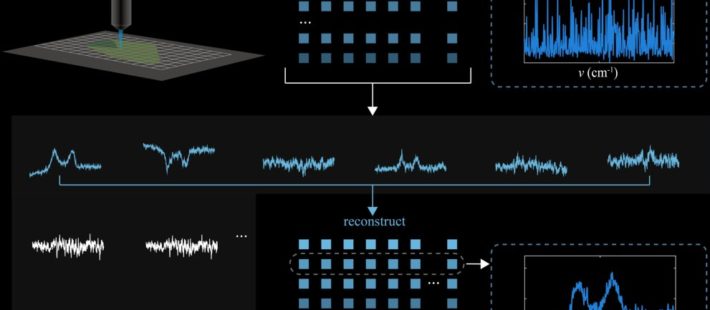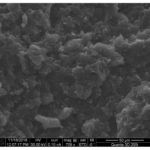Raman spectroscopy is a standard technique for characterize the quality of two-dimensional materials like graphene. But it has a major disadvantage: its low speed. Furthermore, the laser light can also damage some of the two-dimensional materials. University of Twente researchers added a smart algorithm to the detection, resulting in ‘Raman’ working at least fifty times faster and making it ‘gentler’ to sensitive materials. The research is presented in National Science Review.
In Raman spectroscopy laser light is sent to the material sample, and scattered photons tell us about the rotations and vibrations of the molecules inside, and thus about the crystal structure. On average, only around 1 in 10 million photons is scattered in this way. This not only makes it hard to detect the right information, it is also very slow: it may take half a second to image one single pixel. The question is if Raman still remains the best option, or if there are better alternatives. Sachin Nair and Jun Gao, researchers of University of Twente, keep Raman spectroscopy as a starting point, but manage to improve the speed drastically: not by changing the technique itself, but by adding an algorithm.
Noise reduction
This algorithm is not unknown in the world of signal processing and it is called Principal Component Analysis. It is used to improve the signal-to-noise ratio. PCA determines the characteristics of noise and those of the ‘real’ signal. The larger the dataset, the more reliable this recognition is, and the clearer the actual signal can be distinguished. Apart from that, modern Raman instruments have a detector called electron-multiplying charge-coupled device (EMCCD) that improves the signal-to-noise-ratio. The net result of this work is that processing one pixel doesn’t take half a second, but only 10 milliseconds or less. Mapping a single sample doesn’t take hours anymore. An important feature for vulnerable materials like graphene oxide is that the intensity of the laser can be lowered two or three times. These are major steps ahead for getting a fast grip on the materials’ properties.
Multi-purpose
Except for graphene, the improved Raman technique can also be used for other two-dimensional materials like germanene, silicene, molybdenum disulfide, tungsten disulfide and boron nitride. Use of the algorithm is not limited to Raman spectroscopy; techniques like Atomic Force Microscopy and other hyperspectral techniques could also benefit from it.
The research has been done in the group Physics of Complex Fluids of Prof Frieder Mugele, part of UT’s MESA+ Institute. The researchers collaborated with the Medical Cell BioPhysics group and the Physics of Interfaces and Nanomaterials group, both of the University of Twente as well.
Source: The Graphene Council ‒ The news is adapted with editorial change by Compositi magazine.












